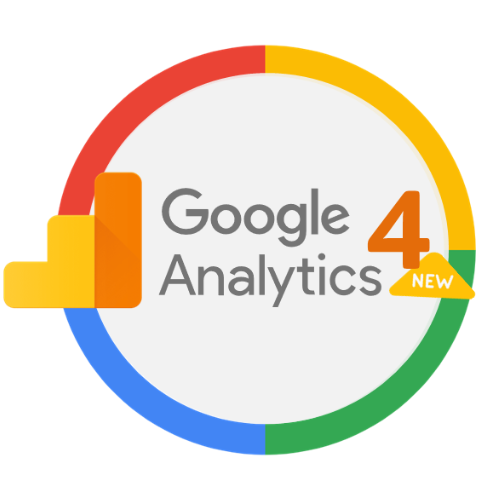A dynamic marketing strategy deserves more than just the orthodox tracking, thereby the new age marketer’s expectations are set high for getting a comprehensive view of their audience and having an effective engagement with them by optimally leveraging marketing tools. Designed to step up from traditional tracking, GA 4 gears you up for ML-based Analytics. Giving you a holistic perspective of your audience GA 4 ensures you are enabled with a bespoke marketing approach with wide integration possibilities.
Here are the additions that GA 4 has come up with as compared with Universal GA:
User-Centric Tracking:
The most obvious difference between Google Analytics 4 (GA4) and Universal Analytics (UA) is their measurement model. UA would group data into sessions, which was the foundation of all reporting. A session is a group of user interactions/ hits with your website that take place within a given time frame.
In Google Analytics 4 properties, every “user interaction”/ hit is an event; there is no distinction between them. That means there won’t be a distinction between a simple pageview or something as complex as filling a lead form.
Now, what that means to you is- Instead of seeing generalized data of a particular time frame, GA 4 makes it easy to zoom in on customer behaviour which can enable you to gain a full understanding of user preferences.
Mobile + App View:
In the past, if you wanted to measure your website then you would use GA, and if you wanted to measure your app then you would use Firebase or any app analytics tool like – Appsflyer or Branch.
Therefore, there was no easy way to combine mobile app and website data for unified reporting.
Therefore, considering the importance of tracking the user as he switches devices GA 4 enables you with a Unified view of the Web and App which collates the user journey of the Web and App together
ML-Based Predictions:
This is the most exciting feature of GA 4. GA 4 has MACHINE LEARNING at its core to enhance your marketing capabilities with its predictive metrics!
You can expect GA 4 to predict the future behaviour of users like:
The probable purchasers in the next 7 days
The probable audience that would go inactive and churn.
And based on this you can design your remarketing campaigns.
GA 4 can also show you the revenue expected for the next 28 days
These informed predictions become handy to create predictive audiences that you can market in precisely targeted campaigns.
Free Integration with Big Query:
Now we all know that Big Query is a data warehouse that allows us to store and query data at very high speeds. Originally Big Query was only available to GA360 (paying) users, but now it’s accessible through GA4 for free. There are two things that Big Query brings to the table.
1st is Unsampled Data:
But with the addition of Big Query to GA 4, Sampling is naturally eliminated as the amount of data that can be collected is now unlimited.
Also, having access to unsampled data ensures that you are taking your decisions on accurate data.
2nd is the possibility of data export:
In the Big Query data warehouse, you can upload your datasets not only from GA but from your Ad Platforms, your CRMs, and your POSs; Naturally, you will be having a Single view of your acquisition, Behaviour, and Conversion data.
Now you can query the hit level of these data sets and find correlations between them by literally analysing terabytes of raw data on a granular level.
Free Integration with the Google Ad Ecosystem:
Google is by far the biggest Ad Ecosystem currently, comprising Google Ads, DV 360, SA360, Optimize, etc
Although these ad platforms are powerful tools to analyse the acquisition and conversion numbers of users, they individually miss correlating the website behaviour with those numbers.
That’s where GA 4’s integration with Google’s Ad Ecosystem helps you, it bridges this data gap by enabling you to have a better understanding of the behaviour of your traffic coming from each marketing channel.
GMP Integration was previously only available to GA360 (paying) customers, however, it is now freely available in GA4 giving you a 360-degree view of channels.
Therefore, in a way GA 4 is helping you to plan, measure and optimize media in one place rather than fishing on an individual platform level in a black box.
Free Integration with Salesforce CRM:
This integration as well was only available on GA 360 previously, but now it can be availed in the free version of GA 4 itself. The integration of GA 4 with CRM would give us two major Benefits:
First, view the complete funnel with your conversion data of the offline medium joined to the online funnel.
Secondly, it will let you know the influence of your online campaigns on your offline conversions, and additionally, you won’t be wasting your budget on the converted leads which previously were still not closed in GA.
Flexible Interface
One of the biggest changes is the interface. In Universal Analytics you had a lot of different readily available reports. But not all were relevant for the business cases at hand.
In the new version, there’s more flexibility in building the report which you are interested in seeing depending on your specific use cases. Exploration section of the GA4 interface allows you to build custom reports and store or share them with relevant stakeholders.
For instance, You can create your custom reports to understand overlap between the devices or the platform and analyse how users interact with your digital assets. You can customize your analyses even further with filters and segments to make sure you’re seeing exactly what you need.
So, GA4 is certainly the most exciting update to Analytics and it will enable marketers to be more data driven with less technical complexity so that they have the edge in this era of Data Driven Decision Making.





